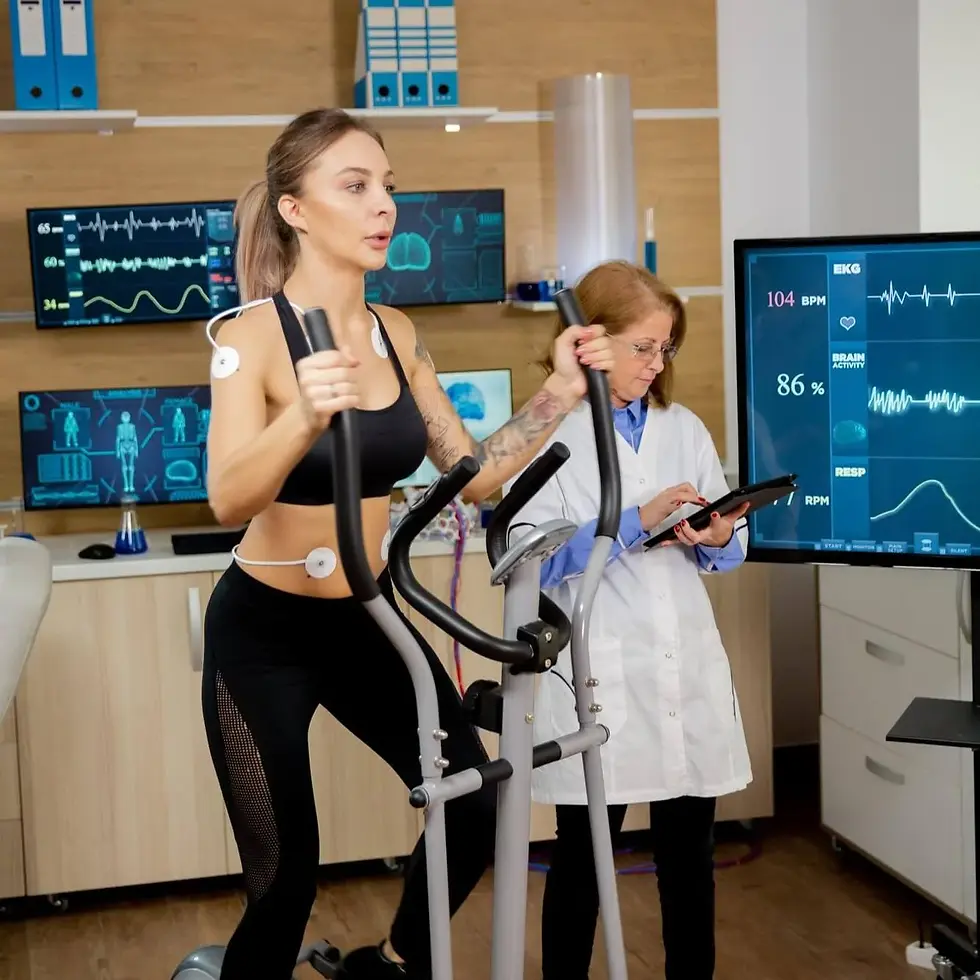
ER
Description
"Event Recorder" test monitors your heart rhythm over time to capture irregularities that occur sporadically. Doctors recommend this device when symptoms like fainting or fluttering occur too infrequently for standard testing. The device is activated during episodes to record key data. This targeted approach helps identify arrhythmias like atrial fibrillation or bradycardia. Recorded results help determine whether medication, further testing, or treatment adjustments are needed. Event recorders offer focused insight into intermittent symptoms and support personalized heart rhythm management.
Category
Heart Function

Event Recorder
Procedure
Invasive
Sample Type
No biological sample is needed for this test.
Units
Not Applicable
Procedure Category
Insert, Measure
Test Group
Cardiac Assessment Group
Test Group Description
Cardiac Assessment Group: Tests within this group focus on evaluating various aspects of heart health and function. They provide insights into cardiac performance, identify potential risk factors for cardiovascular diseases, and assist in diagnosing conditions such as arrhythmias, coronary artery disease, and heart failure.
Key Reasons For Testing
Cardiac Monitoring Device: An event recorder captures heart activity (ECG) during symptoms to help identify rhythm issues.
Symptom Monitoring: Tracks symptoms like palpitations, dizziness, fainting, or chest pain tied to irregular heartbeats.
Patient-Activated Recording: Patients record during symptoms to link events with heart rhythms.
Arrhythmia Diagnosis: Detects irregular rhythms like atrial fibrillation, fast heartbeats, or slow heartbeats.
Treatment Monitoring: Checks how well medications or pacemakers manage symptoms.
Long-Term Use: Observes infrequent symptoms over extended periods.
Results That Differ From The Norm (Direct and Indirect Causes)
Abnormal results may indicate:
Atrial fibrillation (Irregular and rapid heart rate in the upper chambers of the heart)
Atrial flutter (Rapid but regular beating of the heart's upper chambers)
Bradycardia (Abnormally slow heart rate)
Heart block (Interruption or delay in the electrical signals that regulate heartbeat)
Premature atrial contractions (Early, extra heartbea...
Currently, this test is not directly associated with any conditions listed on the Health Status page. However, it may be included as part of a broader set of tests linked to specific health conditions.
Health Status Conditions It May Be Used To Assess
Some Prominent Medical Labs That May Offer This Test
Please note that this particular test has not been associated with any of the listed prominent medical labs. We recommend enquiring with your private physician or nearest hospital to determine where this specific test can be performed.
References
Important Note
Any medical procedure yielding results outside the norm may be directly or indirectly linked to the conditions outlined on this page. Various factors, including genetics, medication and supplement usage, recent illnesses, pregnancy, pre-test eating, smoking, and stress, can impact the test's outcome. Additionally, factors like false positives, false negatives, inaccurate analyses, and others can influence results.
Reference ranges, which help healthcare professionals interpret medical tests, may vary depending on age, gender, and other factors. They may also differ between laboratories due to variations in instruments and methods used. Optimal ranges are designed for preventive purposes, aiming to identify trends and potential risks early, while normal ranges reflect conventional laboratory values indicating no current disease or pathology. Your healthcare practitioner may have specific reasons for testing that deviate from the usual or may interpret results differently based on individual circumstances. Proper interpretation typically involves considering clinical findings and other diagnostic tests. Hence, it is crucial to provide your healthcare professionals with a comprehensive medical history, consult with them for result interpretation, and follow their guidance for potential re-testing or additional diagnostics.
Disclaimer
This content is provided solely for informative and educational purposes. It is not intended as a substitute for medical advice or treatment from a personal physician. Regarding the interpretation of their medical test results and/or specific health questions, it is recommended that all readers and viewers consult their physicians or other qualified health professionals. The publisher is not responsible for any adverse health effects that may result from reading or following the information in this educational content. Before beginning any nutrition, supplement, or lifestyle program, all viewers, especially those taking prescription or over-the-counter medications, should consult their physician or health care practitioner.
Please note that while prominent lab names are included in this content, we cannot guarantee that these labs offer all the tests mentioned. For confirmation, individuals should contact the labs directly or consult their medical practitioners. The information provided reflects general knowledge at the time of publication and may not include recent updates or emerging research. Readers should verify details with qualified professionals to ensure the most up-to-date and accurate guidance.
[1] Hindricks G, Taborsky M, Glikson M, et al. Implant-based multiparameter telemonitoring of patients with heart failure (IN-TIME): a randomized controlled trial. Lancet. 2014;384(9943):583-590.
[2] Rothman SA, Laughlin JC, Seltzer J, et al. The diagnosis of cardiac arrhythmias: a prospective multicenter randomized study comparing mobile cardiac outpatient telemetry versus standard loop event monitoring. J Cardiovasc Electrophysiol. 2007;18(3):241-247.
[3] Zimetbaum P, Goldman A, Josephson ME, et al. Utility of patient-activated cardiac event recorders in general clinical practice. Am J Cardiol. 1997;79(3):371-372.
[4] Al-Khatib SM, LaPointe NM, Curtis LH, et al. Outpatient management of patients with nonvalvular atrial fibrillation: impact of event recorders on treatment decisions. J Am Coll Cardiol. 2003;41(7):1123-1129.
[5] Cooper JA, Hobson N, Cooper TT, et al. A comparison of two patient-activated cardiac event recorders. Pacing Clin Electrophysiol. 2001;24(9 Pt 1):1365-1369.
[6] Reiffel JA. Cardiac rhythm monitoring: new devices and evolving indications. J Am Coll Cardiol. 2006;47(1):25-37.
[7] Brignole M, Menozzi C, Moya A, et al. Mechanism of syncope in patients with heart disease and negative electrophysiologic test. Circulation. 1993;87(6):1884-1891.
[8] Hindricks G, Varma N, Kacet S, et al. Daily remote monitoring of implantable cardioverter-defibrillators: results of the TRUST trial. Eur Heart J. 2010;31(10):1188-1196.
[9] Mittal S, Stein K, Gilliam FR, et al. Remote monitoring of ICDs and pacemakers: recent advances in telemonitoring. Curr Cardiol Rep. 2013;15(5):418.
[10] Krahn AD, Klein GJ, Yee R, et al. Detection of asymptomatic arrhythmias in unexplained syncope. Am J Cardiol.2001;87(2):233-234.
[11] Gibson TC, Heitzman MR. Diagnostic efficacy of 24-hour electrocardiographic monitoring for syncope. Am J Cardiol. 1984;53(1):1013-1017.







